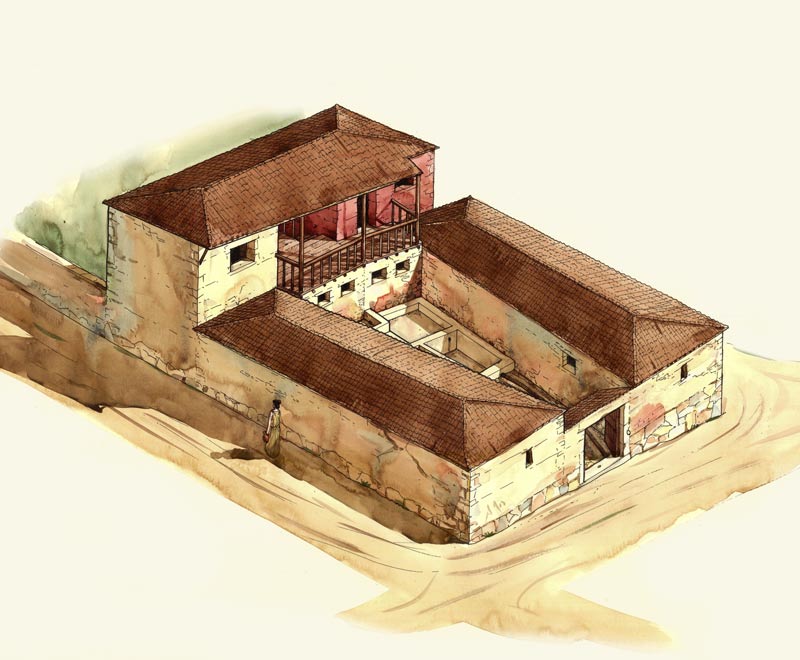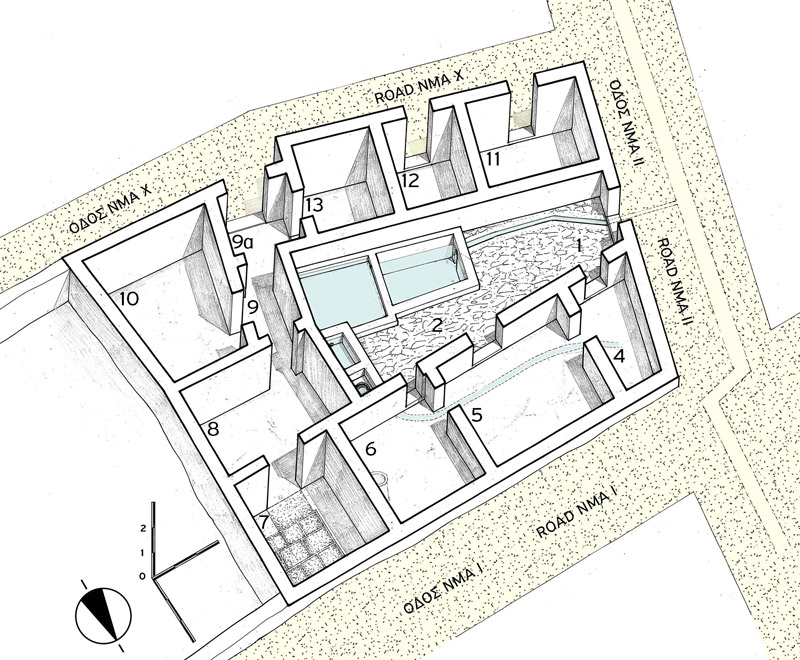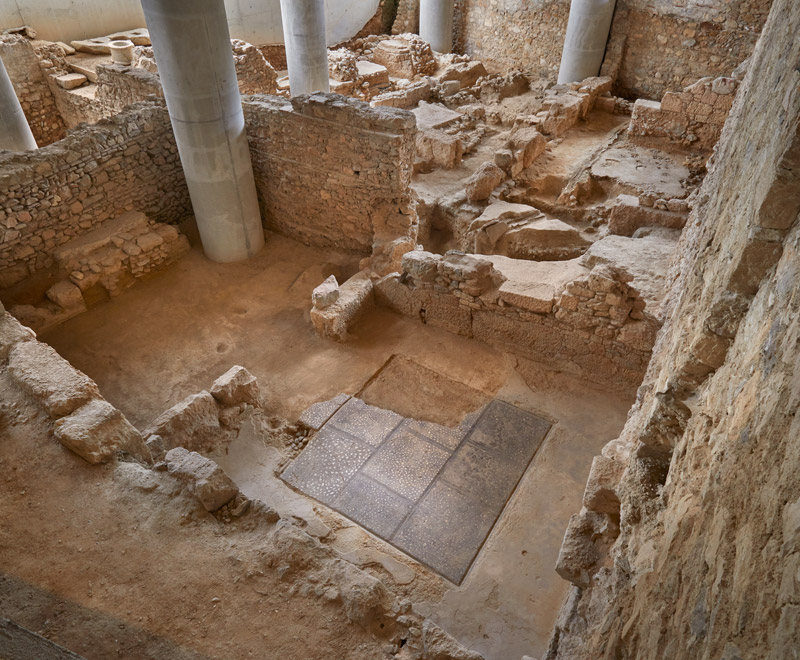THEMATIC SECTION
House Θ
House Θ, one of the oldest residences unearthed in the excavation, is founded in the last twenty years of the 5th cent. BC and survives until the end of the 6th cent. AD. Over its millennium-long history, it undergoes many repairs and reconstructions. The remains chiefly preserved today are from the 5th and 3rd cents. BC, as well as some from the 6th cent. AD.
The rooms of the house are arranged around a small inner courtyard. Particularly prominent is the andron, or men’s banquet room, where the homeowner hosted his friends with an eating and drinking party – the well-known symposium. It has a mosaic floor that provides a sense of luxury and allows the room to be easily cleaned with plenty of water following the banquet. The floor bordering the walls is slightly raised to accommodate couches on which diners could eat, drink, discuss and enjoy themselves, reclining on soft pillows.
In the first half of the 3rd cent. BC, the courtyard is converted into a workshop area with three above-ground basins, installed at different heights, which were inter-connected. A terracotta pipeline supplies clean water, while a second, masonry channel evacuates waste to a sewer beneath the street. Perhaps this workshop is a fullonica, a laundry facility, where people’s clothes are washed or new fabrics are processed and whitened before being sent for dying.
The use of your data is described in the privacy settings










